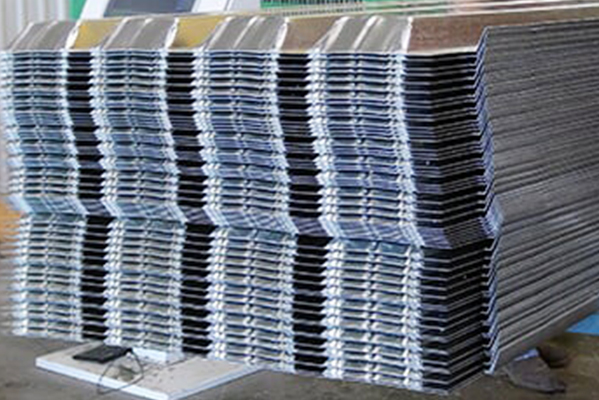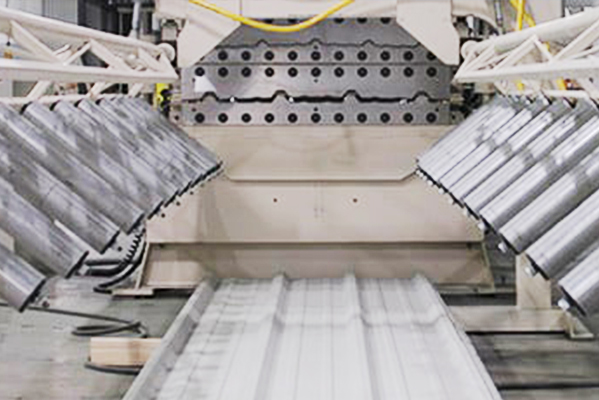Navigation Menu
Contact Us
- Email:
- info@wxavatar.com
- Address:
- Yurong Village, Yuqi Street, Huishan District, Wuxi, China.
Release Date:Apr 09, 2025 Visit:59 Source:Roll Forming Machine Factory
Palletizers are essential machines in modern manufacturing and logistics, designed to automate the stacking of products, boxes, or bags onto pallets for storage and transportation. They improve efficiency, reduce labor costs, and ensure stable, secure loads. Depending on production needs, different types of palletizers are used across industries such as food & beverage, pharmaceuticals, chemicals, and e-commerce.
This article explores the main types of palletizers, their working principles, advantages, and ideal applications.
1. Robotic Palletizers
How They Work
Robotic palletizers use industrial robotic arms equipped with specialized end-of-arm tools (EOAT) such as grippers, vacuum suction cups, or clamps to pick and place products onto pallets. They are highly flexible and programmable, allowing for different stacking patterns.
Advantages
✔ High flexibility – Can handle various product shapes and sizes.
✔ Space-efficient – Requires less floor space than conventional palletizers.
✔ Adaptable to changes – Easy to reprogram for new products or patterns.
Applications
Mixed-case palletizing (e.g., different-sized boxes in e-commerce).
Fragile or irregularly shaped products (bottles, bags, automotive parts).

2. Conventional (Layer) Palletizers
How They Work
Conventional palletizers stack products in pre-formed layers rather than individually. They can be categorized into:
High-level palletizers – Stack products at pallet height, reducing lifting effort.
Low-level palletizers – Stack from ground level, suitable for slower production lines.
Advantages
✔ High speed – Ideal for large-scale production with uniform products.
✔ Consistent stacking – Ensures stable, uniform pallet loads.
Applications
Beverage & can industries (stacking cases of bottles or cans).
Bagged goods (cement, flour, pet food).
3. Hybrid Palletizers
How They Work
Hybrid palletizers combine robotic flexibility with high-speed layer palletizing. They often use robots to pick products and place them into a layer-forming system before final stacking.
Advantages
✔ Balanced speed and flexibility – Handles both uniform and mixed loads efficiently.
✔ Optimized for medium to high production rates.
Applications
Food processing (cases, trays, and mixed packaging).
Consumer goods with varying packaging formats.
4. Mobile Palletizers
How They Work
Mobile palletizers are portable systems that can be moved between production lines or warehouses. They are often mounted on wheels or modular frames.
Advantages
✔ Versatile deployment – Can be relocated as needed.
✔ Ideal for seasonal or changing production needs.
Applications
Small to medium-sized warehouses.
Temporary production setups (e.g., during peak seasons).
5. Automated Guided Vehicle (AGV) Palletizers
How They Work
AGV palletizers are autonomous mobile robots (AMRs) that transport and stack pallets without human intervention. They integrate with Warehouse Management Systems (WMS) for smart logistics.
Advantages
✔ Fully automated material handling.
✔ Reduces forklift dependency in smart warehouses.
Applications
Large distribution centers.
Smart factories with Industry 4.0 integration.
6. Gantry (Cartesian) Palletizers
How They Work
Gantry palletizers use an overhead robotic system that moves along an X-Y-Z axis to pick and place products. They are ideal for heavy or bulky items.
Advantages
✔ High payload capacity – Can handle heavy loads.
✔ Precise stacking – Suitable for fragile or high-value products.
Applications
Automotive parts, construction materials.
Large appliances or industrial products.
Choosing the Right Palletizer
When selecting a palletizer, consider:
✅ Production speed – High-speed lines may need layer palletizers.
✅ Product variability – Robotic palletizers work best for mixed loads.
✅ Floor space – Robotic and gantry palletizers are more compact.
✅ Budget – Conventional palletizers are cost-effective for uniform products.

Future Trends in Palletizing
AI-powered optimization – Smart algorithms for better stacking patterns.
Collaborative robots (cobots) – Safer human-robot interaction.
Sustainable palletizing – Reducing plastic wrap and energy use.
Conclusion
Palletizers are a critical component of modern logistics, offering speed, efficiency, and reliability. From robotic palletizers for flexible handling to AGV palletizers for smart warehouses, businesses can choose the best system based on their production needs.
As automation advances, palletizing technology will continue to evolve, making warehouses and production lines even more efficient. Investing in the right palletizer can significantly enhance productivity, safety, and cost savings in material handling operations.